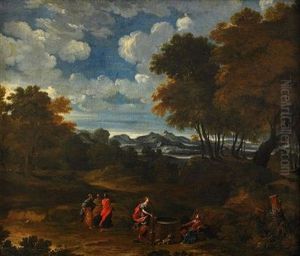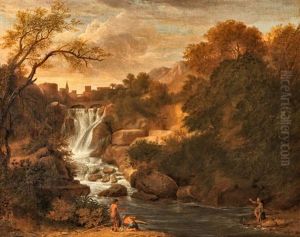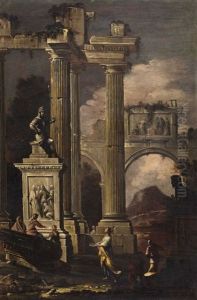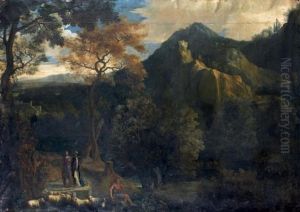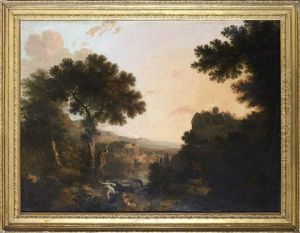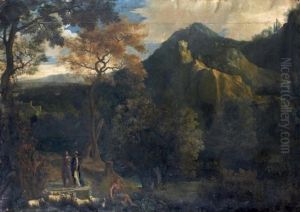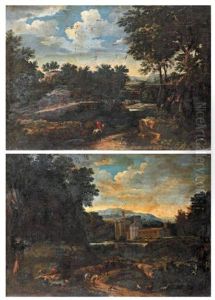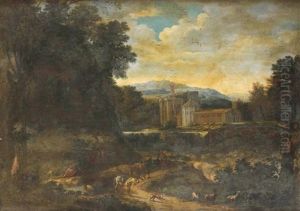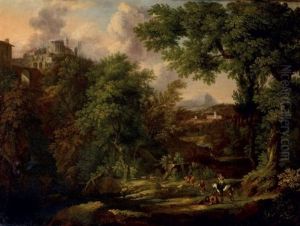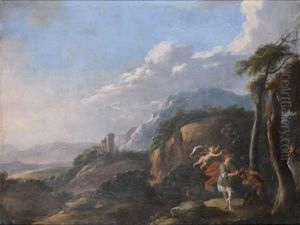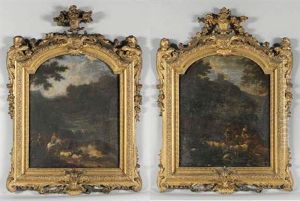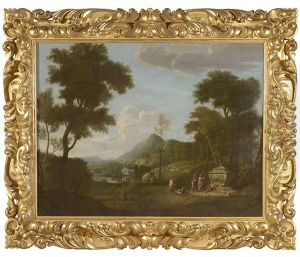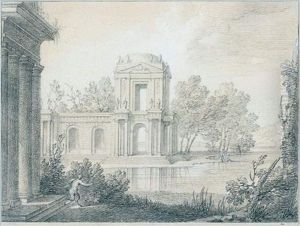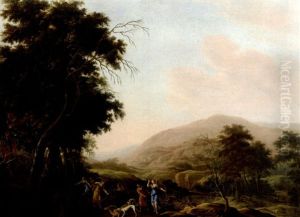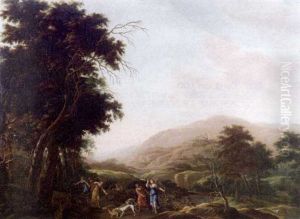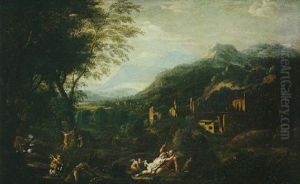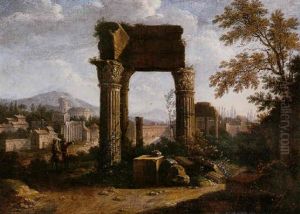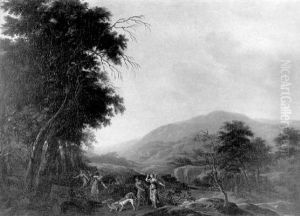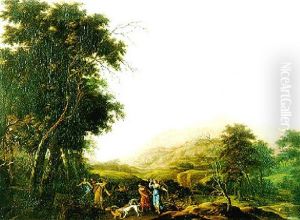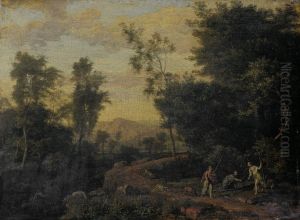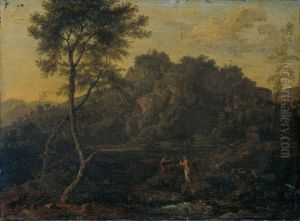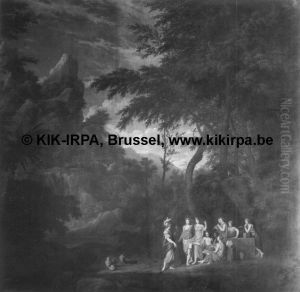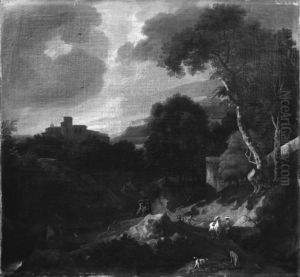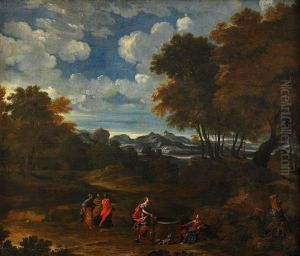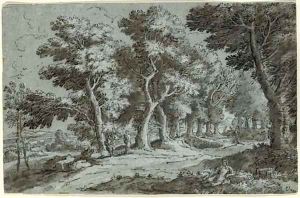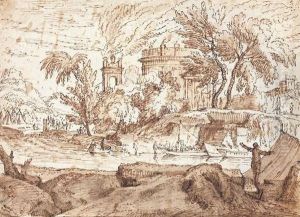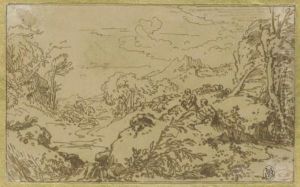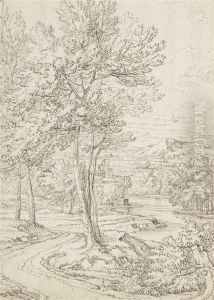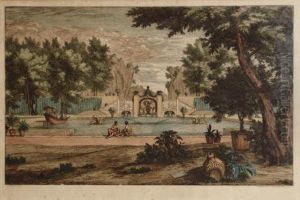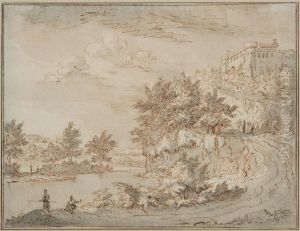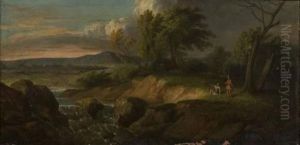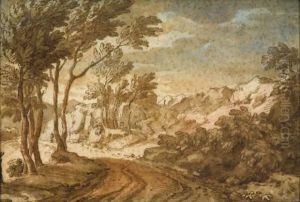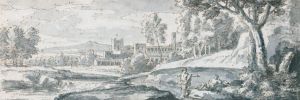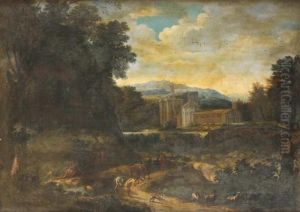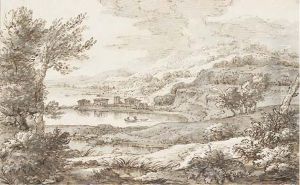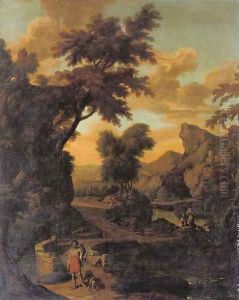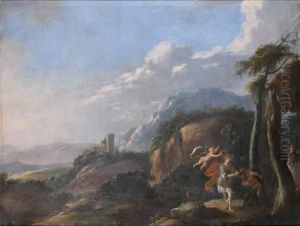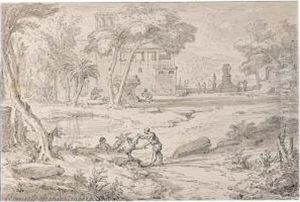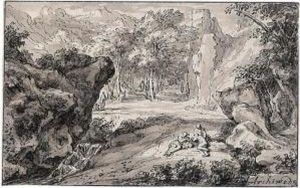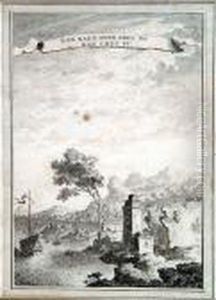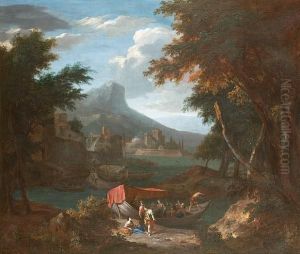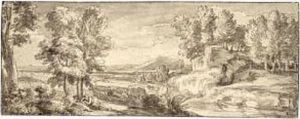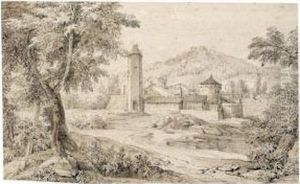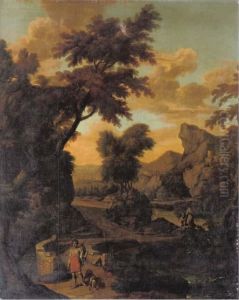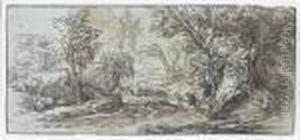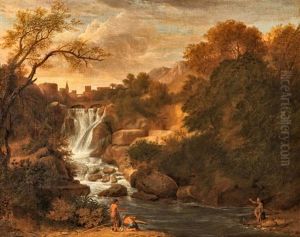Abraham Genoels Paintings
Abraham Genoels, a notable figure in the world of art, was born in 1640 in Antwerp, Belgium. His early life was defined by his passion for drawing and painting, which led him to the Antwerp Academy at a young age. Under the tutelage of renowned artists such as Nicolas-Claude Fabri de Peiresc, Genoels honed his skills and developed a unique style that would later make him a celebrated artist across Europe.
Genoels's journey took a significant turn when he decided to travel across Europe, a decision that greatly influenced his artistic style and broadened his horizons. During his travels, he spent time in Paris and Rome, where he was exposed to the works of classical artists and the burgeoning baroque style, which had a profound impact on his work. In Rome, he became a member of the Bentvueghels, an association of mainly Dutch and Flemish artists living in Rome, where he was given the nickname 'Archimedes' because of his knowledge of geometry and his meticulous approach to landscape painting.
His landscapes are particularly noteworthy, marked by a harmonious blend of realism and idealization, with meticulous attention to detail and a deep appreciation for the beauty of nature. Genoels also made significant contributions to the field of engraving and was highly respected for his skill in this medium.
After years of traveling and working throughout Europe, Genoels returned to Antwerp, where he spent the remainder of his life. His return marked a period of prolific work, during which he executed numerous commissions for churches, public buildings, and private clients. His reputation as an artist continued to grow, and he was eventually inducted into the prestigious Guild of Saint Luke in Antwerp.
Throughout his life, Genoels was not only celebrated for his artistic talent but also for his contributions to the artistic community, mentoring young artists and promoting the arts in Antwerp and beyond. He passed away in 1723, leaving behind a rich legacy that has continued to influence the art world. His works are preserved in various museums and collections worldwide, serving as a testament to his enduring impact on the landscape of European art.
